New Survey Finds Teens Want Schools to Provide Mental Health Services
Use of Chat GPT, absenteeism, post-graduation plans among teens explored in new national poll
A new school year brings new challenges. How can school leaders and teachers maneuver the emergence of modern technology within the classroom? What can be done to resolve mental health and absenteeism?
It starts with a better understanding of the problems. Fresh data shows a substantial number of students report being chronically absent from schools. Students want more mental health services and fewer days of in-person classes. These findings are just some of those explored in our most recent survey of American teens.
Since August 2020, EdChoice, in partnership with Morning Consult, has been surveying a nationally representative sample of American Teens, ages 13-18 (N=1,000). This is the seventh installment of the survey, and the second in 2023. Here are the key takeaways:
1. Nearly one-fifth of teens say they missed more than 15 days of school last year. Examining absenteeism for the first time in our survey, we asked teens the following question: Thinking about last school year, how many WHOLE DAYS of school did you miss and were absent? Perhaps surprisingly, 19 percent of teens said they missed more than 15 days of school during the previous school year. Nearly half of teens (44%) said they missed fewer than 5 days of school last year. Lastly, almost two in five teens (39%) said they missed between 6-15 days of school last year.
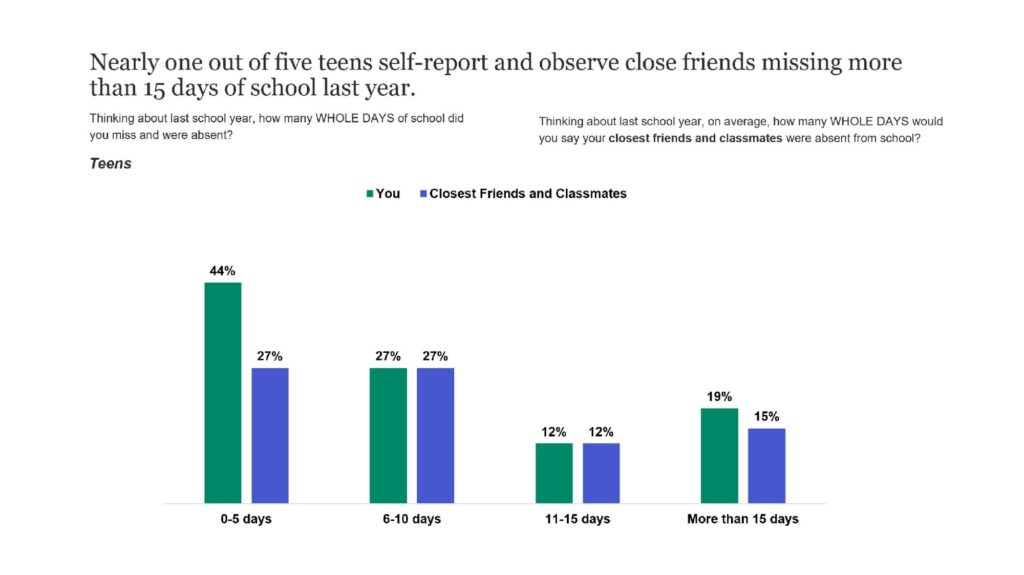
To provide more context, we asked teens about how many days of school their closest friends and classmates missed last year. When looking at those who missed between 6-15 days of school, teens reported a similar experience to their own for their peers (39%). Teens were slightly less likely to say their friends and classmates missed more than 15 days of school last year, though they still reported a disturbingly high figure of 15 percent. Teens were much less likely to say their friends and classmates missed less than 5 days of school (27%), however.
2. Nearly two-thirds of teens want their school to offer mental health services. We asked teens about the types of services their school offers to students. More than two-thirds of teens say their school offers services such as college and career guidance (68%) and tutoring, both within and outside of school hours (67%). Fifty-seven percent and 46 percent of teens say their school offers mental health services and online class options, respectively.
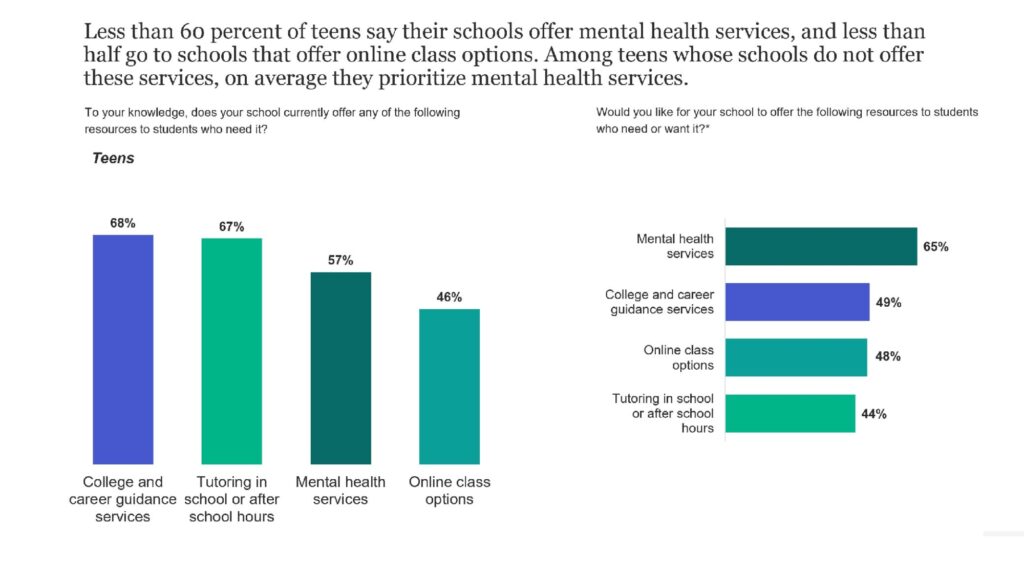
Among teens in schools that do not offer mental health services, 65 percent of teens would like their school to offer such services to students. There is less of an appetite for services like college/career guidance (49%), online class options (48%), and tutoring (44%).
3. Teens are feeling much better about their relationships, health, and happiness. Since March, teens have been feeling better when it comes to relationships with friends, happiness, physical health, motivation, relationships with family, and mental health. Teens’ anxiety and stress levels are improving. Looking back on data from the spring, teens have made the largest improvement in areas including stress (32-point increase), happiness (31-point increase), and anxiety (29-point increase).
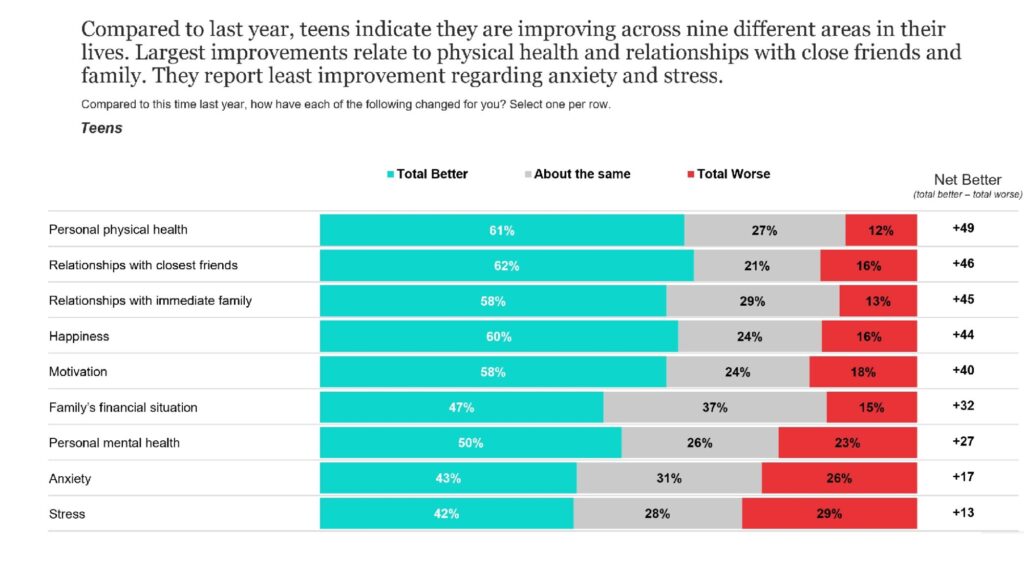
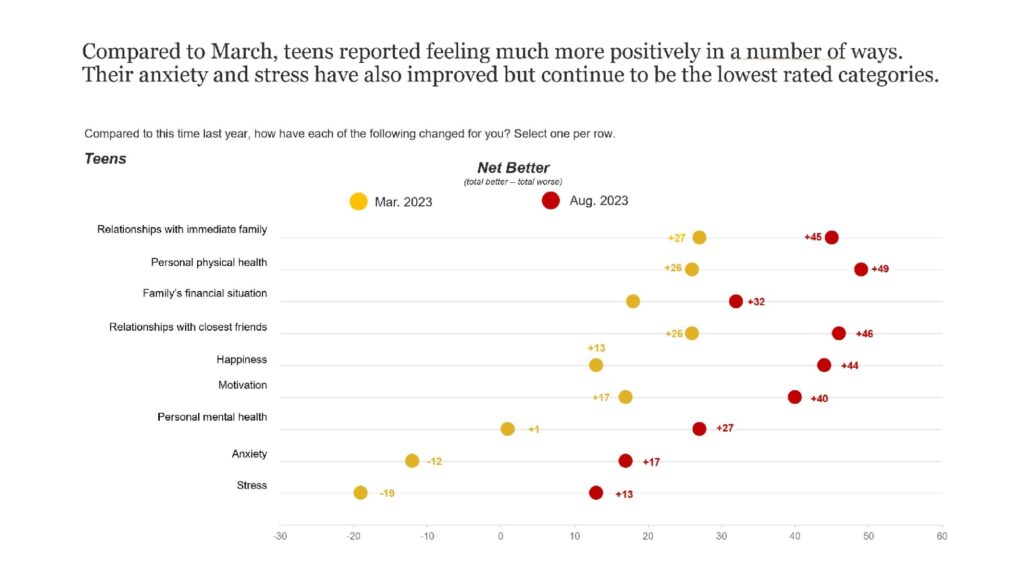
4. Nearly two-thirds of teens have heard “a lot” or “some” about ChatGPT. When asked about awareness of artificial intelligence (AI) like ChatGPT, 59 percent of teens said they have heard about the technology. This represents a significant increase from March, when only 42 percent of teens had heard of ChatGPT. Male respondents, teens enrolled in private school, and Asian teenagers are the groups most aware of ChatGPT. Black teenagers, teenagers from rural areas, and teenagers living in the Midwest are the groups least aware of ChatGPT.
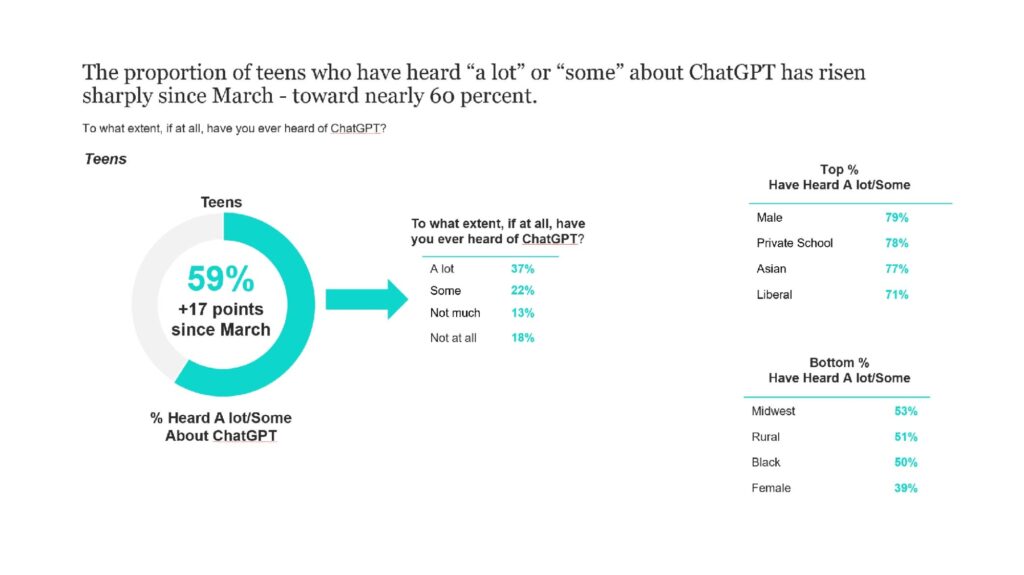
Looking at usage of AI technology, 50 percent of teens say they use AI in their free time or at school. A plurality of the teens who use AI do so in their free time (31%). When diving into usage of AI within the classroom, 41 percent of teens say they used AI for help on assignments or tests last school year. A slightly higher percentage of teens (43%) heard about or saw other students in their school use AI for help on assignments or tests.
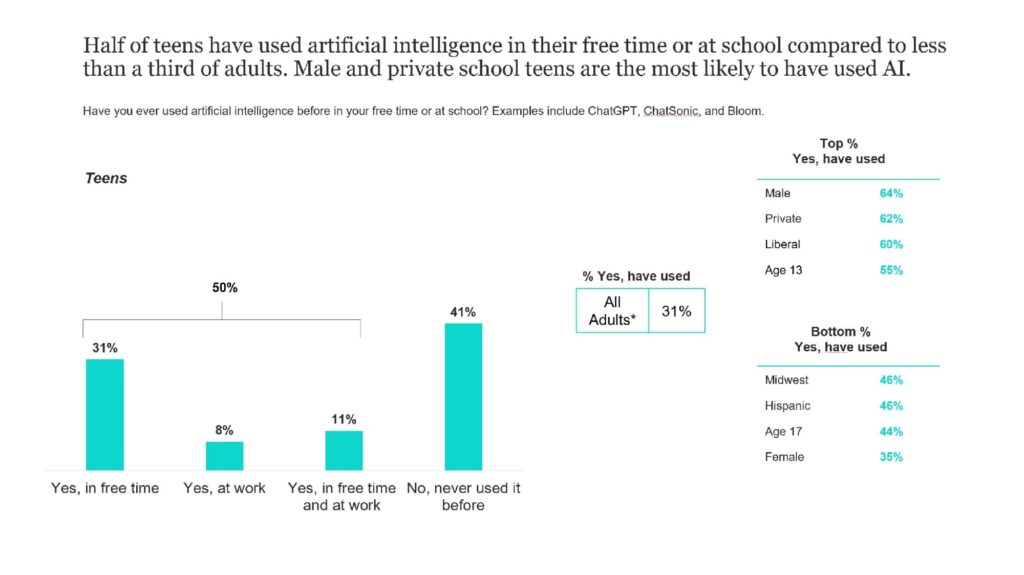
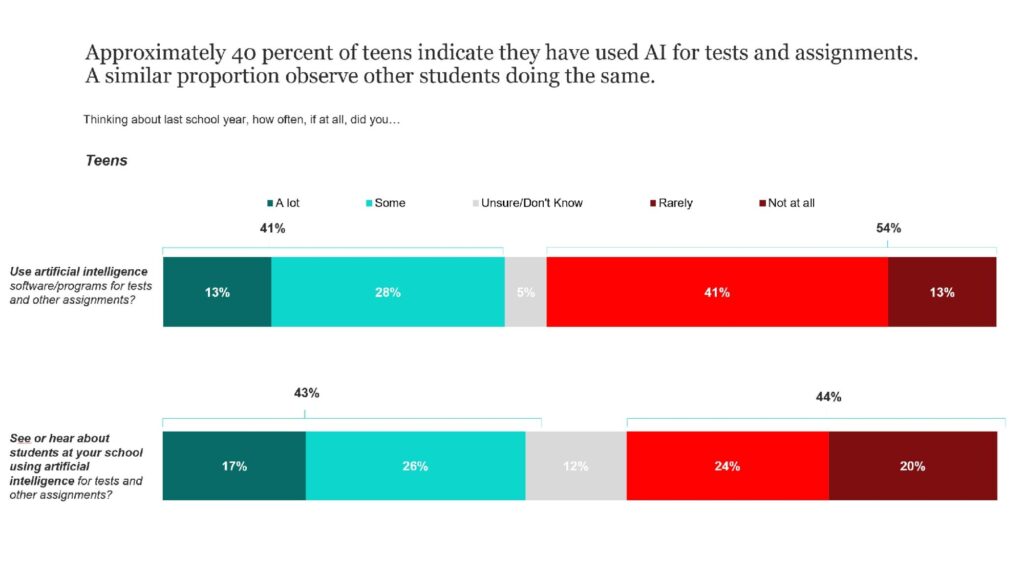
5. Less than half of teens want to attend in-person classes 5 days a week. Only 45 percent of teens prefer the traditional model of attending class in-person 5 days a week. Similarly, 45 percent of teens desire a version of a hybrid schooling model. Interestingly, roughly one in ten teens prefer to take class exclusively from home. These preferences align roughly with what we see from parents, with less than half wanting their child to attend in-person classes at school 5 days a week.
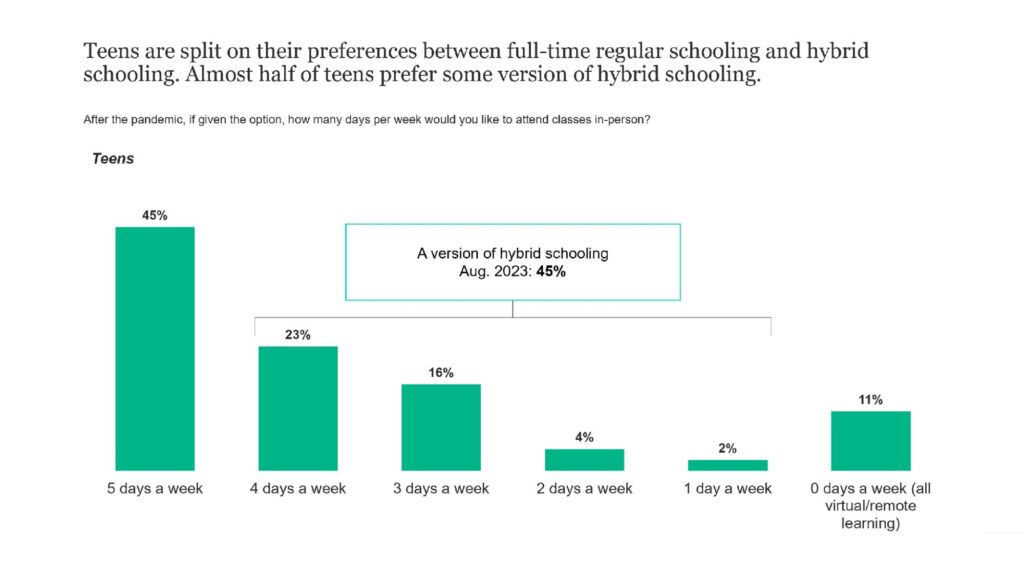
6. One-third of teens are concerned about a violent intruder entering their school. Teens’ concern about a violent intruder entering their school rose 5 points from last spring. Teens are much less concerned than parents, however. According to our most recent parent survey, 50 percent of parents are concerned about the possibility of a violent intruder entering their child’s school. Teens’ concern has typically been much less than that of parents, though the gap has shrunk from last spring.
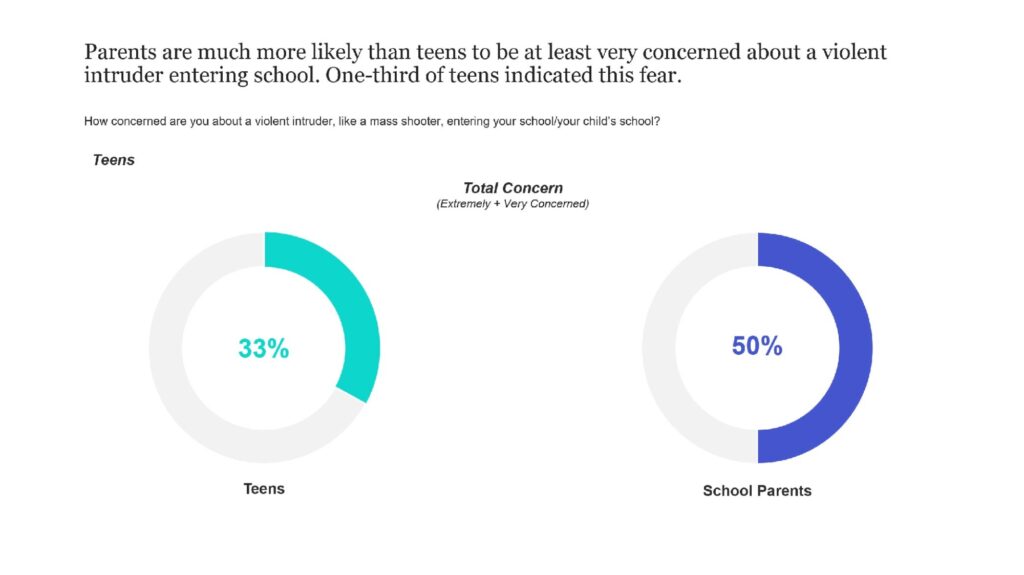
7. Teens are feeling more optimistic about their school’s handling of guns, mental health, violent behaviors, and bullying. Overall, less than half of teens feel their school is addressing issues like guns (43%), mental health (40%), violent behaviors (40%), bullying (36%) well. While there is plenty of work to be done for schools to alleviate these problems, teens are feeling more positive about these issues compared to how they felt in March. The percentage of teens who feel their school is doing a good job addressing guns (+3), mental health (+9), violent behaviors (+4), and bullying (+4) increased across the board compared to last spring. This is encouraging, and hopefully sustainable, news.
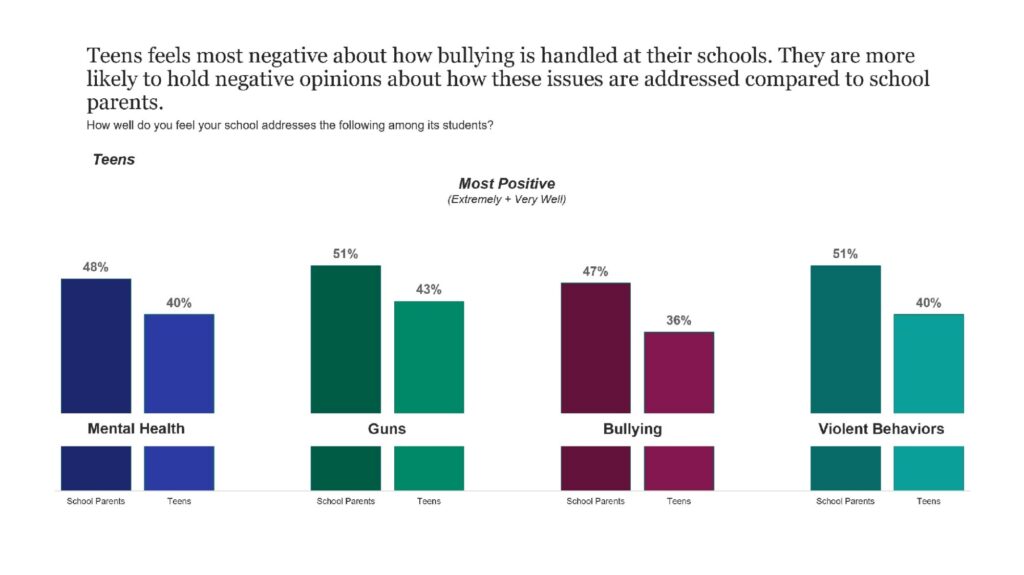
8. Teens continue to be very reliant on social media platforms for information about current events. When asked about the primary sources of information for teens, social media (64%) continues to be the main delivery tool. While social media remains at the top, the percentage of teens saying it is their primary source of information dropped 7 points from September 2022. After social media, teens are likely to turn to family members (50%) or friends/peers (48%) for information about current events. Teens are much less likely to rely on TV news (29%), teachers (26%), or podcasts (5%) than the sources mentioned above.
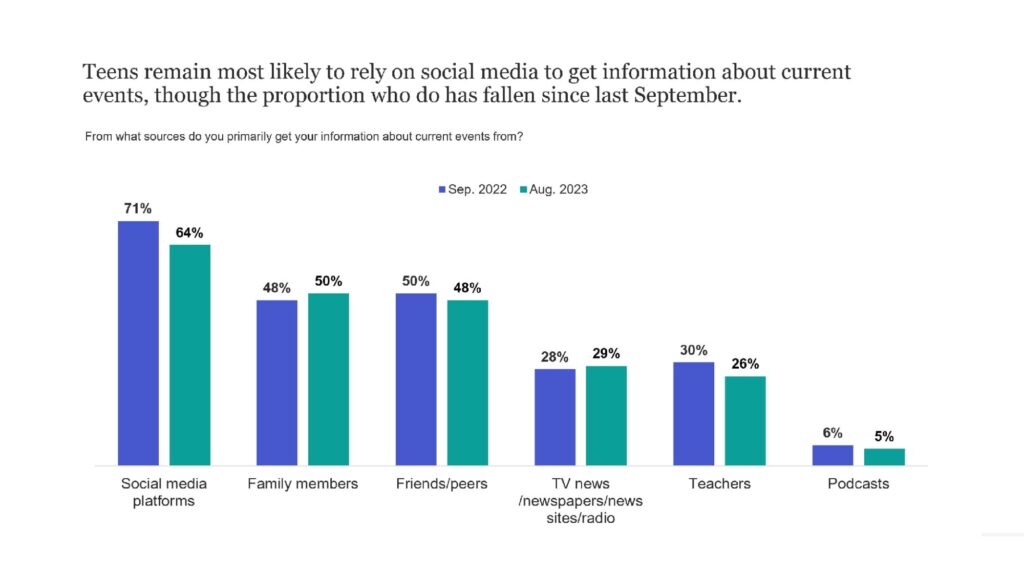
Along the same lines, we asked teens about where they go for help with their schoolwork. In the past, internet search engines had been the go-to option for teens. That is still the case, as 48 percent of teens say they use the internet for help with their schoolwork. That said, the proportion of teens relying on the internet for help with schoolwork has dropped 16 points since March 2022. Interestingly, 45 percent of teens say they ask their family members for help on their schoolwork. In March 2022, only 33 percent of teens said they go to family members for academic help.
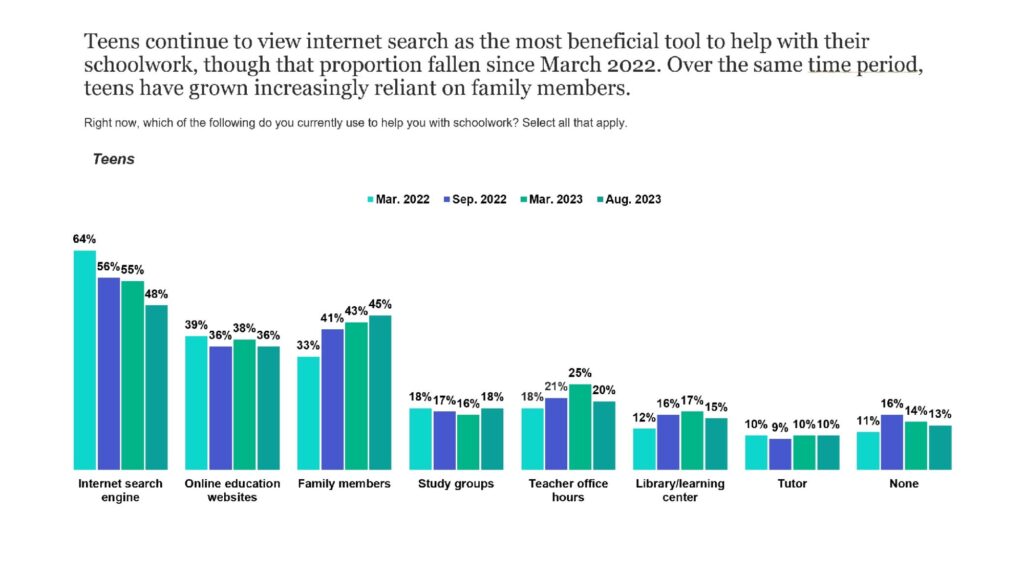
Visit the EdChoice Public Opinion Tracker site to access past reports, crosstabs, questionnaires, and our national and state dashboards. All are updated monthly. We also provide a more in-depth description of our research and survey methods.
Our K–12 education polls archive is updated on a rolling basis, roughly a few times each month. Please don’t hesitate to let us know if we are missing any surveys, or if there are accidental errors.




